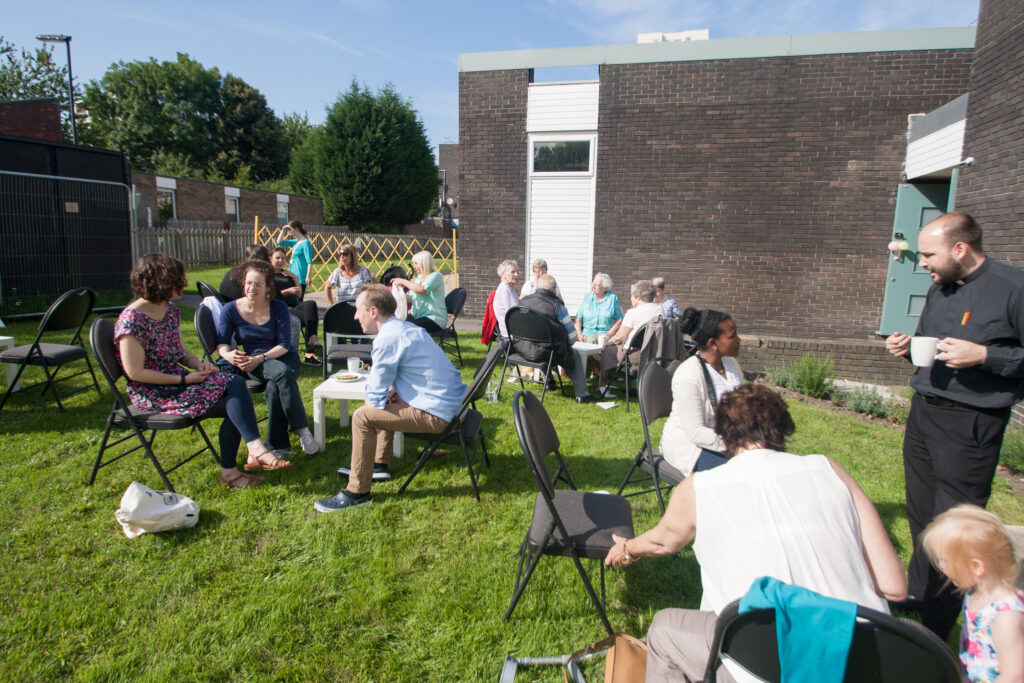Who is my neighbour?

When I was in junior school I enjoyed drawing maps for the streets between school and home. Our own road – a short cul-de-sac or close, named Little Youngs – usually appeared as a short-toed Christmas stocking dangling down from the main road. There were only 12 houses in the close, so when we heard the question ‘who is my neighbour?’ and the story of the Good Samaritan I knew exactly who my neighbours were. Of course, in knowing that I missed the point of the story: ‘neighbourness’ was not restricted to those living very close, in houses similar to our own. Yet, looking back at my mistake, I can see a certain practicality in it: the people I was most likely to come across were those living in Little Youngs.
‘Love your neighbour as yourself’ is a splendid second commandment, but it isn’t much of a practical plan: nor is it intended to be. Perhaps a better guide to how this can actually work is the Apostle Paul in the city of Ephesus: for two years he hired or borrowed the lecture hall of Tyrannus in the afternoons, to have space to teach the Hebrew scriptures and set out ‘The Way’. His neighbours were those inhabitants of Ephesus who wanted to be part of those discussions, but not everyone living in Ephesus.
So what if we ask Holy Biscuit the question ‘who is your neighbour?’ But more in the sense of ‘who are you primarily meeting?’ Given you can’t be with everyone in the city, who do you want to have long-term discussions with? The answer is that there are three main groups: the people of Shieldfield, artists (particularly those who are committed to social engagement in their work) and people exploring questions of faith. I think it is worthwhile exploring the neighbourliness of each of those groups, as each one is a reflection of, and an outworking of, the values and purposes of Holy Biscuit.
Shieldfield is, in one sense, the easiest: the Holy Biscuit building sits in Shieldfield, so the people of Shieldfield are, in the simplest sense, its neighbours: ‘what affects them, affects us’. This is not the place, and I am not the person, to set out the strengths of Shieldfield, nor the problems it faces, but what I can say is that over the last sixty or so years Shieldfield is a community that has been ‘done to’ by successive public and private interests, from the demolition of King Charles’s house (then the oldest building in Shieldfield) in the mid-1960s to the student accommodation mushrooming over the last five years. Being part of Shieldfield, Holy Biscuit looks to serve the community, helping individuals and groups find their voices, at times speaking on behalf of the community, but also equipping the community.
The artists: again, there is something of the physical ’near-by-ness’ that can make neighbours: the artistic presence in the Ouseburn Valley has been growing for several decades (even if that does make it sound like an H G Wells alien), but Holy Biscuit’s work with artists is based on more than that. Many artists, especially early career artists, or those who are first generation in higher eduction, face challenges in developing sustainable practice. Holy Biscuit offers support for that development, including time to listen, discussion and feedback to help them define their way of working. Holy Biscuit is particularly interested in artists who are looking to develop an artistic practice which is engaged with a community. Although Holy Biscuit has two ‘white cube’ gallery spaces mounting exhibitions is not the primary means of engaging with artists.
The final set of neighbours is people exploring questions of faith, which is not a geographically defined group. Holy Biscuit is an organisation with a Christian foundation, specifically a Methodist one. That finds its most visible expression in Mixing Bowl (a loose community that gathers fortnightly to reflect on aspects of faith), but faith underpins the daily activity of Holy Biscuit.
None of those three sets of neighbours stands completely distinct from any of the others, there are intersections and overlaps. The challenge for Holy Biscuit, and for those of us who regard ourselves as friends, allies or supporters, is still to love our neighbours as ourselves.